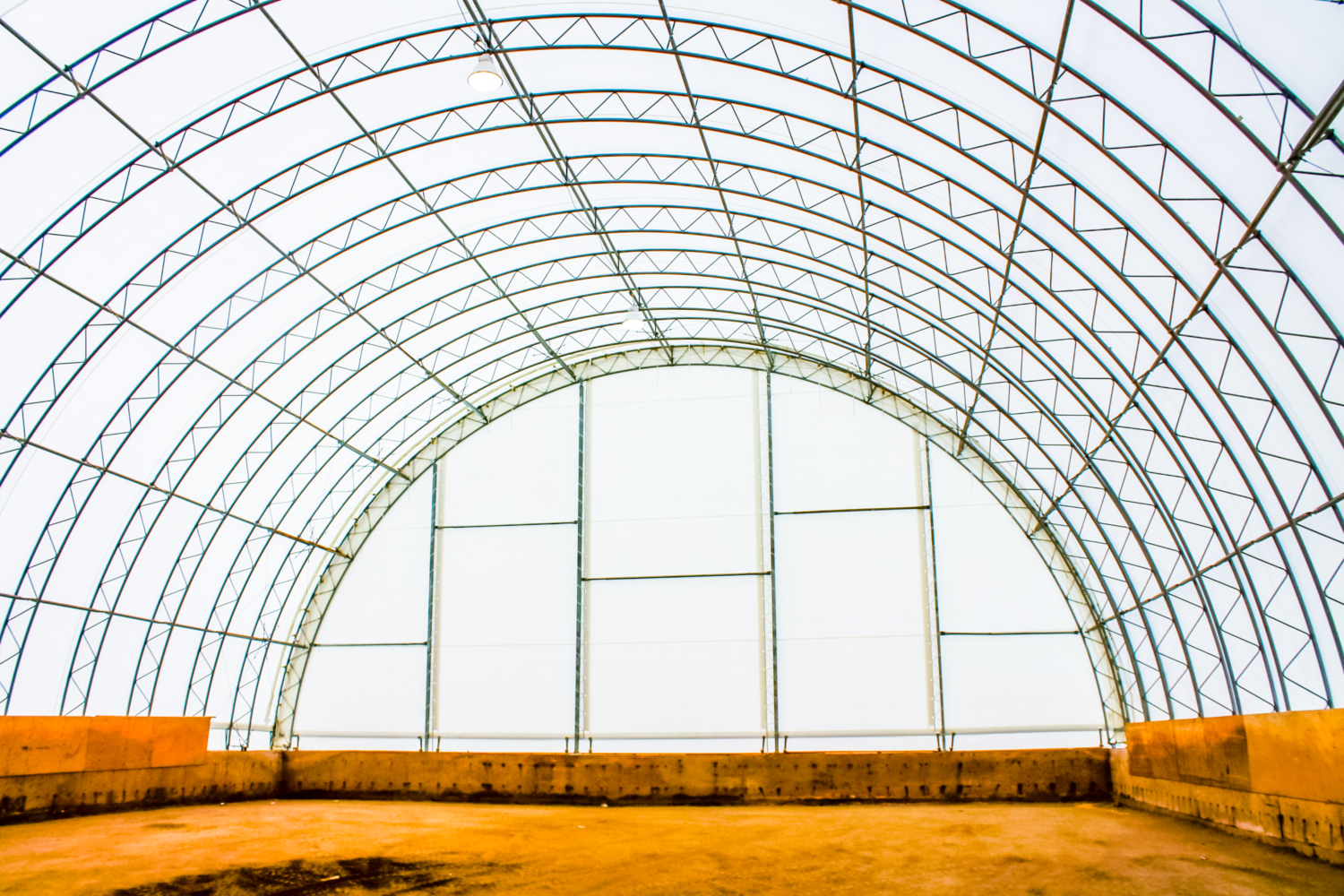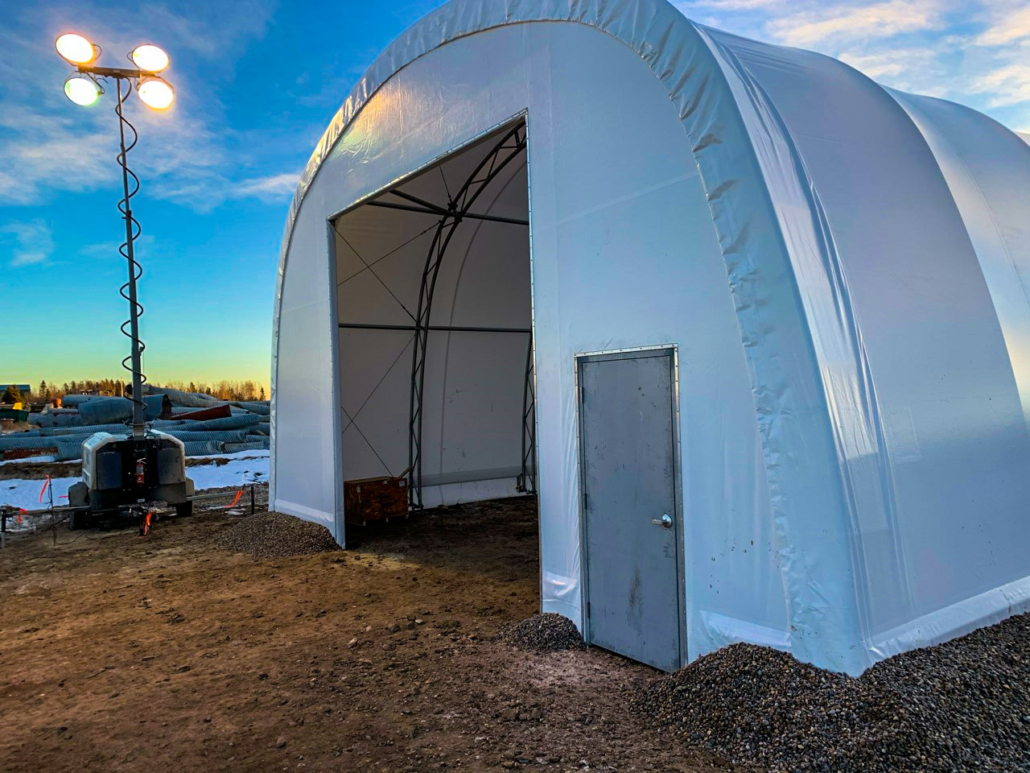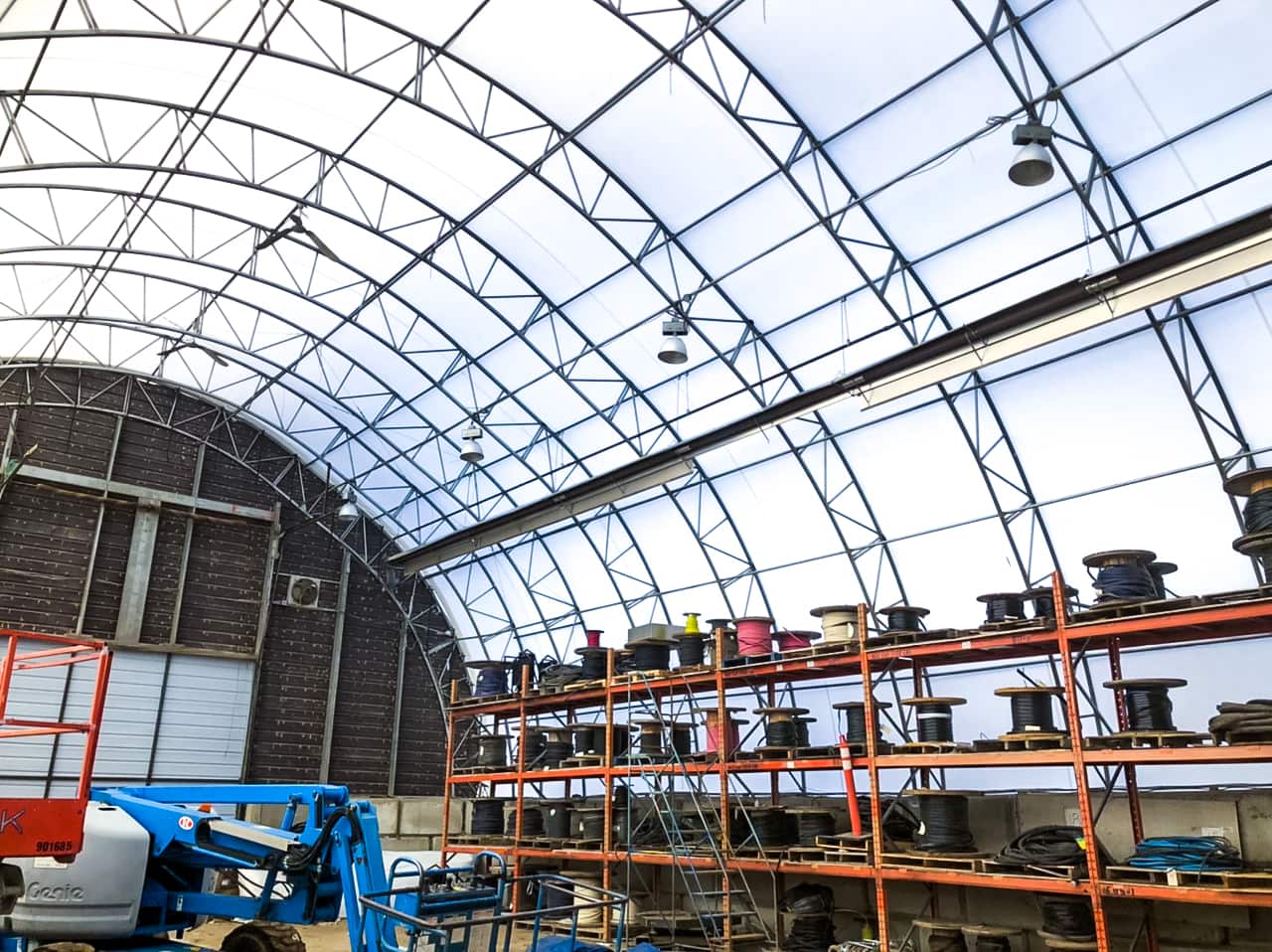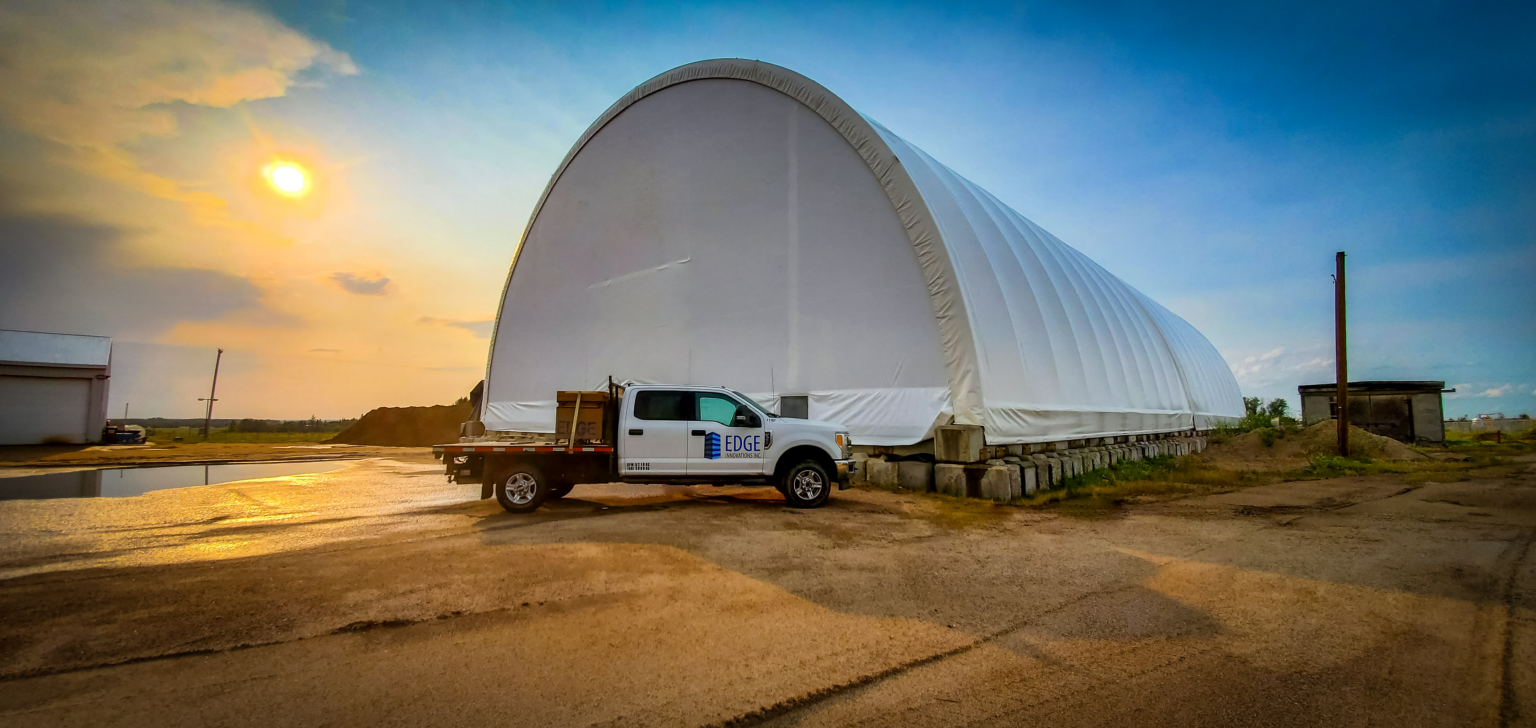The beauty of fabric structures and buildings is that they’re more affordable than conventional structures, are easier and faster to set up, and can withstand most kinds of weather. The only fundamental aspect you should be concerned about is that, while they are a more cost effective alternative to traditional structures, they still require some care and maintenance. This blog will look at what you can do to keep your fabric structure in the best shape possible all year round.
Cleaning
The biggest and most obvious step you should take when it comes to maintaining your fabric structure is cleaning. Since most fabric buildings are directly exposed to dirt, silt, moisture and other contaminants, a proper cleaning schedule and help keep your building looking like new. While you might think cleaning your fabric structure takes a simple wash, you’ll need to pay a little more attention if you want to do it right to ensure your fabric lasts.
Some of the tools and items you will need to clean your fabric properly include:
- Source of water
- Soft bristle brush
- Hose or low-pressure power sprayer
- Dish soap
- Sponge
- Bucket
- Soft, dry cloth
Using a low-pressure sprayer is crucial and means you’re not going to risk damaging the fabric of your structure. If a high-pressure prayer is used, it may damage the fabric coating and cause pre-mature fabric wear.
Once you have all the items needed to clean your fabric, you’ll want to perform a cleanse on a small portion of your fabric. It ensures you won’t damage, discolor or ruin a large part of your fabric’s surface if the dish soap, sponges or brushes are too abrasive. This is good to do just to be on the safe side.
If you’ve run a test clean on a small, lower area of fabric and there is no discoloration or damage, you can continue cleaning the rest of your fabric structure using the items listed above.
The first step in the cleaning process will be to use your hose or low-pressure sprayer to remove any loose debris and contaminants on the fabric.
Next, fill the bucket with warm water and mix in some dish soap. Use the soft bristle brush and/or sponge to gently scrub off and get any stuck contaminants that wouldn’t come off with the initial spray-down. Once completed, give the building one final rinse and examine the fabric to determine if you need to repeat the process in any areas.
While cleaning, pay close attention to how your fabric reacts. If you notice weaknesses or changes to the fabric’s structural integrity, you may need to send some photos to your fabric building supplier or schedule an official inspection to see if your structure needs immediate attention. Here at EDGE, we have a team that can tell you right away if your building needs further attention.
As the condition of your fabric will be impacted by the environment, the need for cleaning will vary. However, as a general rule, fabric buildings will typically only need to be cleaned once a year.
Inspection
Once the cleaning process is complete and you’ve allowed your structure to dry correctly, it’s time to inspect it to see the overall appearance and composition of the fabric.
This step can be done during the cleaning process, but we recommend doing it after inspecting your fabric in its best possible condition.
When performing your inspection, look for signs of wear or slight damage. Things like deeper scratches, discoloration, excess stretching, peeling, small holes and thinning are all signs that alert you to the possibility of needing to replace your fabric in the future.
That’s why routine inspections are so crucial to the maintenance of your structure because some of these wear and tear issues can be prevented far in advance and will usually cost a lot less to replace if found early.
Don’t forget to check the metal frame for wear and damage as well. Look for signs of excessive fatigue on joints and couplings, loose fixings and mounting points, or anything else that might be out of the ordinary. Frame and fixing damage is far more serious than fabric damage, so ensure that every aspect of your frame is checked during your inspection.
Even though fabric structures are durable and made from tough, weather-resistant materials designed to last a long time, we recommend checking your fabric for wear and tear every six months so that any more minor damages or signs of weakness in the structure can be found well in advance and won’t risk getting turned into significant damages.
Apart from your bi-annual structure check, we recommend that you inspect and check your structure after heavy storms, heavy snowfall or hail, accidental falls of trees or other debris on the outside of your structure and any exceptional events of any kind that may influence the stability of your structure.
We also suggest that you check your structure after doing any available replacements or changes to system elements on the structure. Having this in place ensures that you can immediately negate the risks in the event of anything abnormal.
Final Thoughts
It’s essential to be proactive when maintaining your fabric structure. Look out for significant weather events that may affect its integrity or safety, and set reminders for structural and fabric checks every six months.
By proactively taking care of and maintaining your structure, you’ll be able to increase its lifespan and reduce any risks of structural failure and injuries.
Routine maintenance and cleaning reduce your chances of damage, saving you money and frustration in the long run.
If you’re interested in knowing more about our fabrics, construction and maintenance plans, visit our website or contact us today.
Here at Edge Inc, we are committed to providing the most durable, functional, and affordable fabric structure options in North America.






